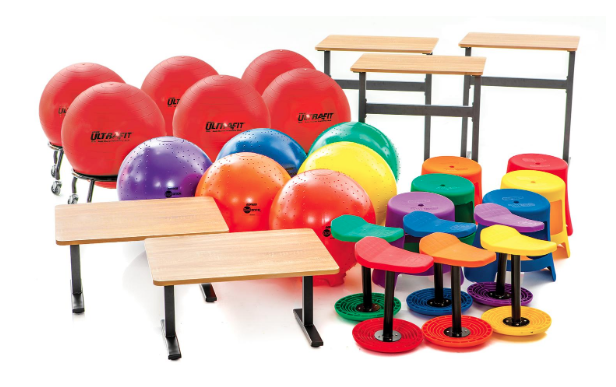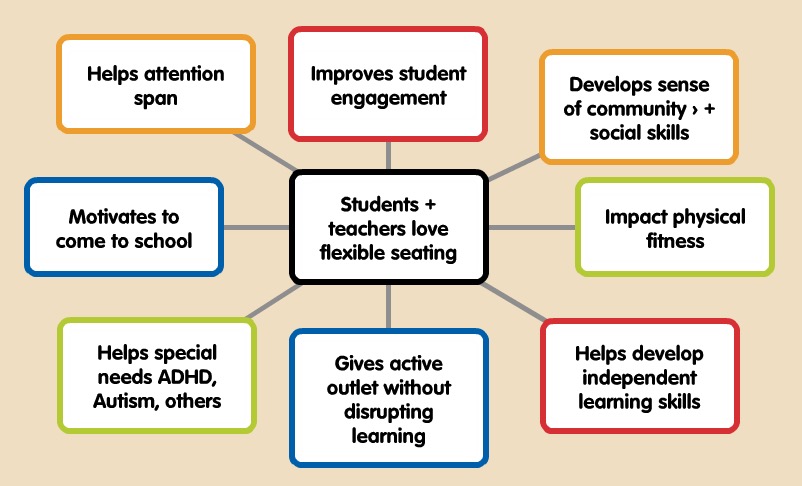Flexible Seating

How you arrange your classroom can make a huge impact on teaching and learning. It can make an impact on student behavior and learning outcomes.
Julie Plummer a teacher from Nampa, Idaho states in her blog that flexible seating:
STEPS:
1. Read this research article from Education Publications - The Room Itself Is Active: How Classroom Design Impacts Student Engagement
2. Read the following two articles on flexible seating. You will see many ideas from teachers across the United States. Some of these rooms would not be appropriate for your students. You need to assess the needs of your students and then determine the best layout and furniture for them.
- Flexible Seating: 21 Awesome Ideas for Your Classroom
- 16 Awesome Flexible-Seating Classrooms That Will Blow Your Teacher Mind
3. If you decide to make changes to your classroom make sure to do the following:
- Research the different designs
- Make a price list of things that need to be purchased
- Get administration approval before making the changes
- Collaborate with other teachers who would like to make changes to their room
- Start out slow! Do not make all the changes overnight
- Create rules for the different areas
- Introduce the different areas to your students
4. Now that you have seen some pretty unique ideas, how would you like to change your classroom?
- Create a short plan/outline that you can share with the instructor your ideas for changing your classroom.
- Suggested ideas to include are:
- Furniture desired
- The layout of the room
- Prices to share with administration
- Plan for acquiring furniture and resources
- Grants available
- Suggested ideas to include are:
Move on to the Final Assignment to complete this course.
Standards
Addressing the ISTE Standards For Educators
Learner
1a. Set professional learning goals to explore and apply pedagogical approaches made possible by technology and reflect on their effectiveness.
1c. Stay current with research that supports improved student learning outcomes, including findings from the learning sciences.
Leader
2b. Advocate for equitable access to educational technology, digital content and learning opportunities to meet the diverse needs of all students.
2c. Model for colleagues the identification, exploration,
evaluation, curation and adoption of
new digital resources and tools for learning.
Designer
5a. Use technology to create, adapt and personalize learning experiences that foster independent learning and accommodate learner differences and needs.
5b. Design authentic learning activities that align with content area standards and use digital tools and resources to maximize active, deep learning.
5c. Explore and apply instructional design principles to create innovative digital learning environments that engage and support learning.
Facilitator
6a. Foster a culture where students take ownership of their learning goals and outcomes in both independent and group settings.
6b. Manage the use of technology and student learning strategies in digital platforms, virtual environments, hands-on makerspaces or in the field.
6c. Create learning opportunities that challenge students to use a design process and computational thinking to innovate and solve problems.
6d. Model and nurture creativity and creative expression to communicate ideas, knowledge or connections.
Analyst
7a. Provide alternative ways for students to demonstrate competency and reflect on their learning using technology.
7b. Use technology to design and implement a variety of formative and summative assessments that accommodate learner needs, provide timely feedback to students and inform instruction.
7c. Use assessment data to guide progress and communicate with students, parents and education stakeholders to build student self-direction.
